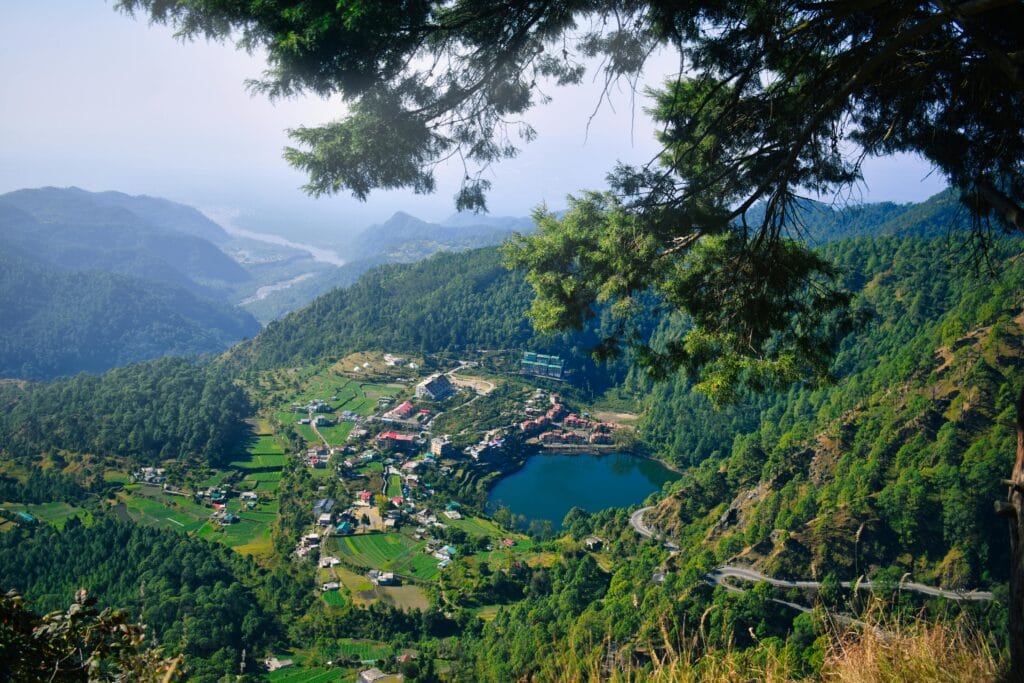Table of Contents
Introduction
India is emerging as a global hub for eco-tourism, with a growing focus on preserving the natural environment and promoting responsible travel. As travelers increasingly seek out experiences that are both meaningful and sustainable, India’s rich biodiversity, varied landscapes, and unique cultures offer the perfect backdrop for Eco-Tourism in India. This shift towards greener travel practices is not only benefiting the environment but also providing economic opportunities for local communities. In this blog post, we’ll explore the rise of The Top eco-friendly travel practices in India:, highlight key sustainable practices, and discuss how travelers can contribute to this growing trend.

1. The Growing Popularity of Eco-Tourism in India
Eco-tourism in India is on the rise as travelers become more environmentally conscious. From the dense forests of the Western Ghats to the arid deserts of Rajasthan, there are endless opportunities to explore India’s natural beauty while minimizing your environmental impact. According to the Ministry of Tourism, eco-tourism is not only preserving the country’s natural resources but also generating employment for local communities. For instance, the eco-tourism initiatives in states like Kerala, Sikkim, and Himachal Pradesh are leading the way in sustainable tourism models that focus on conservation, community participation, and cultural preservation.
2. Conservation-Centric Initiatives: Protecting India’s Wildlife
India’s eco-tourism efforts are heavily focused on protecting its wildlife, and several conservation projects are linked to tourism. National parks and wildlife sanctuaries like Jim Corbett, Ranthambore, and Kaziranga are prime examples where eco-tourism supports conservation. Visitors are encouraged to follow strict guidelines, such as reducing plastic usage, staying on designated paths, and maintaining a safe distance from wildlife. Many eco-resorts and lodges near these parks operate on sustainable principles, using solar power, rainwater harvesting, and composting to minimize their ecological footprint.
3. Community-Based Tourism: Empowering Local Populations
Eco-tourism in India goes beyond nature conservation—it also aims to uplift local communities by creating economic opportunities. Many eco-tourism projects in rural areas of India are run by local people, allowing visitors to immerse themselves in traditional lifestyles while contributing directly to the community’s welfare. For example, the eco-villages in Ladakh offer tourists a chance to live sustainably, experiencing organic farming and traditional Ladakhi culture while supporting local businesses. This model ensures that tourism revenue flows directly into the community, improving local livelihoods without damaging the environment.

4. Green Travel Accommodations: Eco-Lodges and Resorts
Sustainable accommodations are key players in India’s eco-tourism movement. Eco-lodges and green resorts are popping up across the country, offering eco-conscious travelers a guilt-free stay. From the jungle lodges of Karnataka to the beachfront eco-resorts in the Andaman Islands, these accommodations are designed with sustainability in mind. They prioritize renewable energy sources, waste reduction, and eco-friendly materials in construction. For instance, the luxury eco-resort “SwaSwara” in Gokarna uses rainwater harvesting, solar energy, and organic produce sourced from local farmers, providing guests with an eco-friendly retreat.
5. The Role of Responsible Travelers in Eco-Tourism
Eco-tourism is not just about destinations—it’s about how we travel. As a responsible traveler, you can contribute to the eco-tourism movement in India by making conscious decisions that reduce your carbon footprint. Simple practices like carrying reusable water bottles, avoiding single-use plastics, and opting for local transport over private vehicles make a big difference. Supporting eco-certified businesses, choosing sustainable tour operators, and respecting local cultures are all part of responsible travel. Moreover, traveling during off-peak seasons can reduce the environmental strain on popular destinations, while helping local economies thrive year-round.
Conclusion: Eco-Tourism Is Shaping the Future of Travel in India

The rise of eco-tourism in India signals a positive shift towards more sustainable and responsible travel. By prioritizing conservation, community engagement, and green practices, eco-tourism not only preserves the environment but also benefits the local population. As travelers, embracing eco-tourism allows us to explore the world more thoughtfully, leaving a minimal impact while creating maximum positive change. So, whether you’re hiking in the Himalayas or enjoying a serene stay in a Kerala backwater eco-lodge, remember that every small choice you make contributes to a larger movement towards a sustainable future.
Tips for Planning Your Eco-Friendly Trip in India
- Research Your Destination: Look for eco-certified accommodations and tour operators committed to sustainability.
- Pack Light and Smart: Use eco-friendly products like biodegradable toiletries and reusable bags.
- Respect Local Cultures and Communities: Be mindful of traditions and support local businesses wherever possible.
- Travel Off-Season: This reduces environmental stress on popular destinations and helps maintain local economies.
- Leave No Trace: Follow responsible travel guidelines, ensuring that you leave nature as untouched as you found it.

